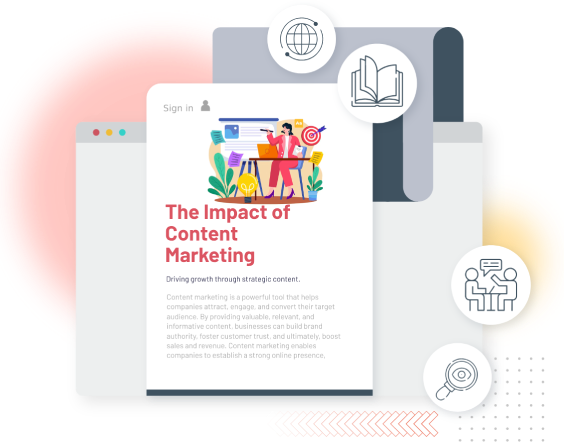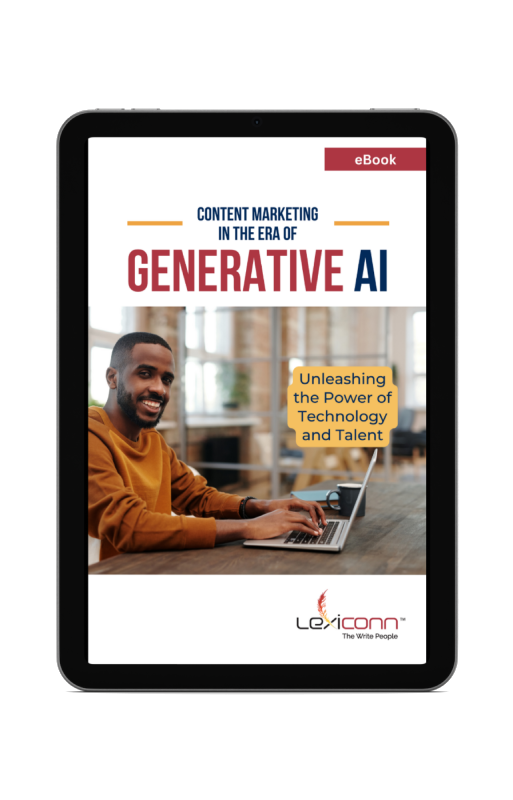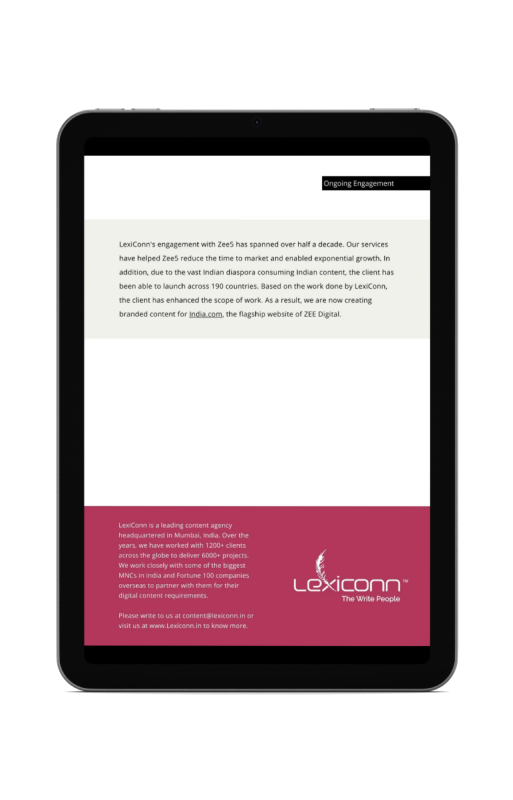Let’s face it: the internet is a noisy place. Every day, over 7.5 million blog posts are published, and countless businesses are vying for attention on platforms like LinkedIn. But here’s the hard truth—creating great content isn’t enough anymore. If your content doesn’t align with what your audience is actively searching for, it’s like shouting into a void. That’s where SEO content and search intent come into play.
Think about it: when was the last time you clicked on the second page of Google search results? Probably never. That’s because users don’t scroll past the first page. If your content isn’t optimized to match search intent, it’s likely buried under a mountain of competitors. For example, if someone searches for “how to optimize LinkedIn for B2B lead generation,” but your blog only talks about general LinkedIn tips, you’ve missed a golden opportunity to connect with a highly targeted audience.
This blog isn’t just another generic guide to SEO. We’re diving deep into how you can align your content strategy with search intent, why keyword research is the backbone of successful SEO, and how to implement SEO content best practices that actually work. Whether you’re a small business owner, a marketer, or a content creator, this guide will help you create content that doesn’t just rank—it resonates.
What is Search Intent, and Why Does It Matter?
You’re searching for “how to grow your business on LinkedIn.” You click on a blog that promises to answer your question, but instead, it’s a generic list of LinkedIn tips. Frustrating, right? This is why search intent is the unsung hero of SEO content. It’s the secret sauce that ensures your content doesn’t just rank—it resonates.
Search intent is the “why” behind every Google search. It’s the reason someone types a query into the search bar. Are they looking for information? Trying to find a specific website? Ready to make a purchase? Or comparing options before deciding? Understanding this intent is the key to creating content that truly connects with your audience.
The Four Types of Search Intent
- Informational Intent: The user wants answers. For example, “What is SEO content?” or “How does search intent work?”
- Navigational Intent: The user is looking for a specific website or page. For example, “LexiConn LinkedIn optimization services.”
- Transactional Intent: The user is ready to take action. For example, “Hire a content writing agency in Mumbai.”
- Commercial Investigation: The user is comparing options. For example, “Best content marketing agencies in India.”
By aligning your content with the right search intent, you’re not just chasing rankings—you’re solving real problems for your audience. And when you solve problems, you build trust, authority, and, ultimately, conversions.
The Role of Keyword Research in SEO Content
Let’s be honest: creating content without keyword research is like setting off on a road trip without a map. You might eventually get somewhere, but it won’t be where you intended. Keyword research is the compass that guides your content strategy, ensuring you’re targeting the right terms and phrases your audience is actually searching for.
How to Conduct Effective Keyword Research
- Start with Your Audience: Put yourself in your audience’s shoes. What would they search for? For example, if you’re targeting businesses looking for LinkedIn optimization, think about terms like “LinkedIn lead generation tips” or “how to grow B2B connections on LinkedIn.”
- Use the Right Tools: Tools like Google Keyword Planner, SEMrush, and Ahrefs can help you uncover high-volume, low-competition keywords. For instance, you might discover that “how to use search intent for better rankings” is a long-tail keyword with growing interest.
- Analyze Competitors: Take a peek at what your competitors are doing. Are they ranking for keywords you haven’t considered? For example, if a competitor’s blog on “SEO content best practices” is performing well, it might be worth creating your own, more comprehensive version.
- Focus on Long-Tail Keywords: These are your golden tickets. They’re specific, less competitive, and often align perfectly with user intent. For example, instead of targeting “SEO content,” go for “how to create SEO-driven content for LinkedIn.”
The Power of Long-Tail Keywords in SEO Content
While most blogs talk about the importance of keywords, few dive deep into why long-tail keywords are a game-changer for SEO content. Long-tail keywords are longer, more specific phrases that users type into search engines. They may have lower search volumes, but they often have higher conversion rates because they align closely with search intent.
Why Long-Tail Keywords Matter:
- Lower Competition: Short-tail keywords like “SEO content” are highly competitive. Long-tail keywords like “how to create SEO content for small businesses” are easier to rank for.
- Higher Intent: Users searching with long-tail keywords are often further along in the buyer’s journey. For example, someone searching for “best tools for keyword research” is likely ready to take action.
- Better ROI: Because long-tail keywords are more specific, they attract a more targeted audience, which can lead to higher engagement and conversions.
How to Find Long-Tail Keywords:
- Use Google’s “People Also Ask” Section: This is a goldmine for long-tail keywords. For example, if you search for “SEO content,” you might see questions like “How do I write SEO-friendly content?” or “What are the best practices for SEO content?”
- Leverage Forums and Social Media: Platforms like Reddit, Quora, and LinkedIn groups are full of people asking specific questions. These can inspire long-tail keywords.
- Analyze Competitor Content: Tools like SEMrush or Ahrefs can show you which long-tail keywords your competitors are ranking for.
How to Use Search Intent for Better Rankings
Once you’ve nailed your keyword research, the next step is to align your content with search intent. Here’s how:
1. Create Content That Matches the User's Intent
- Informational Content: Answer questions and provide value. For example, “What is SEO content, and why is it important for LinkedIn?”
- Transactional Content: Make it easy for users to take action. For example, “Hire the best LinkedIn optimization agency in Mumbai.”
- Commercial Investigation: Help users compare options. For example, “LinkedIn optimization vs. Facebook ads: Which is better for B2B?”
2. Optimize Your Content for SEO
- Keyword Placement: Include your primary keyword in the title, meta description, and first 100 words. Sprinkle secondary keywords naturally throughout.
- Headings and Subheadings: Use H2, H3, and H4 tags to break up your content. Keep headings concise (under 40 characters) and descriptive.
- Internal and External Links: Link to relevant pages on your site (like your LinkedIn optimization services) and authoritative external sources.
3. Focus on Readability and Engagement
- Short Paragraphs and Sentences: Keep it digestible. Aim for paragraphs under 50 words and sentences under 25 words.
- Use Visuals: Break up text with infographics, charts, or branded images (700x350 pixels works best).
- Include CTAs: Guide your readers. For example, “Ready to optimize your LinkedIn profile? Contact LexiConn for a free consultation.”
The Importance of Content Structure for SEO and User Experience
Creating great content isn’t just about what you say—it’s also about how you present it. A well-structured blog not only improves SEO but also enhances the user experience, keeping readers engaged and encouraging them to stay longer on your page.
Key Elements of a Well-Structured Blog:
- Clear Headings and Subheadings: Use H1 for the title, H2 for main sections, and H3/H4 for subsections. This makes your content easy to scan and helps search engines understand the hierarchy of your content.
- Short Paragraphs and Sentences: Large blocks of text are intimidating. Keep paragraphs under 50 words and sentences under 25 words for better readability.
- Bullet Points and Numbered Lists: These break up the text and make it easier for readers to digest information. For example:
- Use bullet points for lists.
- Use numbered lists for step-by-step guides.
- Visuals and Infographics: Images, charts, and infographics not only make your content more engaging but also improve SEO when optimized with alt text.
How Structure Impacts SEO:
- Improved Readability: Search engines favor content that’s easy to read and navigate.
- Higher Dwell Time: A well-structured blog keeps readers on your page longer, which signals to search engines that your content is valuable.
- Better Indexing: Clear headings and subheadings help search engines understand and index your content more effectively.
SEO Content Best Practices
To ensure your content ranks well and resonates with your audience, follow these best practices:
- Write for Humans, Not Just Search Engines: While SEO is important, your primary goal should be to provide value to your readers. Avoid keyword stuffing and focus on creating high-quality, engaging content.
- Optimize Meta Titles and Descriptions: Keep meta titles under 25 characters and meta descriptions under 175 characters. Include your primary keyword and a compelling reason for users to click.
- Use Relevant Images: Include images that are 700x350 pixels and align with your brand colors. Use alt text to describe images and improve accessibility.
- Proofread and Edit: Use tools like Grammarly to check for grammar, spelling, and punctuation errors. Proofread your content twice to ensure it’s polished and professional.
- Add a TL;DR Section: Include a summary or TL;DR section at the beginning of your content to give readers a quick overview.
The Role of Analytics in Refining Your SEO Content Strategy
Creating SEO content is just the first step. To truly succeed, you need to measure its performance and refine your strategy based on data. This is where analytics come in. Tools like Google Analytics, Google Search Console, and SEMrush can provide invaluable insights into how your content is performing.
Key Metrics to Track:
- Organic Traffic: How many visitors are coming to your blog from search engines? This is a direct indicator of your SEO content performance.
- Bounce Rate: Are readers leaving your page quickly? A high bounce rate could indicate that your content isn’t meeting their search intent.
- Keyword Rankings: Are you ranking for your target keywords? If not, it might be time to revisit your keyword strategy.
- Click-Through Rate (CTR): How many people are clicking on your blog in the search results? A low CTR could mean your meta title and description need improvement.
How to Use Analytics to Improve Your Content:
- Identify Top-Performing Content: Look at which blogs are driving the most traffic and engagement. What do they have in common? Use these insights to create more of what works.
- Fix Underperforming Content: If a blog isn’t ranking or attracting traffic, consider updating it with fresh information, new keywords, or a better structure.
- Track User Behavior: Use heatmaps and session recordings to see how users interact with your content. Are they scrolling to the bottom? Where do they drop off? This can help you identify areas for improvement.
By leveraging analytics, you can continuously refine your SEO content strategy, ensuring it aligns with search intent and delivers measurable results.
How LexiConn Can Help You Master SEO-Driven Content
At LexiConn, we don’t just create content—we create content that works. Whether you’re looking to optimize your LinkedIn profile, boost your blog rankings, or develop a full-fledged content strategy, we’ve got you covered. Here’s what we offer:
- Content Auditing: We’ll analyze your existing content and identify gaps.
- Keyword Research: We’ll find the keywords your audience is searching for.
- Content Creation: We’ll craft engaging, SEO-driven content tailored to your brand.
- LinkedIn Optimization: We’ll help you turn your LinkedIn profile into a lead-generating machine.
Visit us at www.lexiconn.in or email us at [email protected] to learn more. Plus, we’re offering a free 30-minute content consultation to help you get started. Book your session here.
Bottom Line
Aligning your content strategy with search intent is no longer optional—it’s essential for success in today’s competitive digital landscape. By understanding your audience’s needs, conducting thorough keyword research, and following SEO content best practices, you can create content that not only ranks well but also drives meaningful engagement.
At LexiConn, we’re passionate about helping businesses like yours achieve their content goals. Whether you’re looking to optimize your LinkedIn profile, create SEO-driven blog posts, or develop a comprehensive content strategy, we’ve got you covered. Let’s work together to take your content to the next level.
Boost your Content Strategy.
Download the Free eBook now.
Unlock Generative AI's potential for content marketing success. Unearth its impact on teams and businesses. Witness real-life examples and case studies, showcasing AI-driven content ingenuity.








